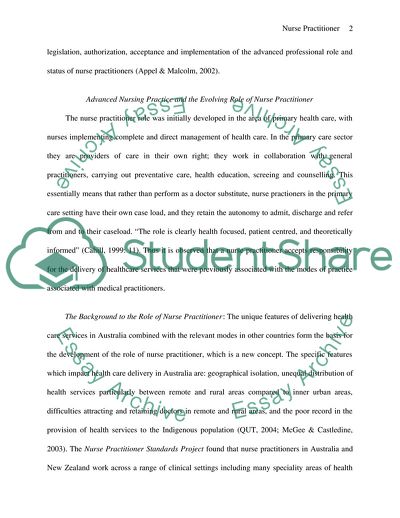Cite this document
(Advanced Nursing Practice in Australia Essay Example | Topics and Well Written Essays - 3000 words, n.d.)
Advanced Nursing Practice in Australia Essay Example | Topics and Well Written Essays - 3000 words. https://studentshare.org/health-sciences-medicine/1714505-the-development-of-advanced-nursing-practice-and-the-evolving-role-of-nurse-practitioner-in-australia
Advanced Nursing Practice in Australia Essay Example | Topics and Well Written Essays - 3000 words. https://studentshare.org/health-sciences-medicine/1714505-the-development-of-advanced-nursing-practice-and-the-evolving-role-of-nurse-practitioner-in-australia
(Advanced Nursing Practice in Australia Essay Example | Topics and Well Written Essays - 3000 Words)
Advanced Nursing Practice in Australia Essay Example | Topics and Well Written Essays - 3000 Words. https://studentshare.org/health-sciences-medicine/1714505-the-development-of-advanced-nursing-practice-and-the-evolving-role-of-nurse-practitioner-in-australia.
Advanced Nursing Practice in Australia Essay Example | Topics and Well Written Essays - 3000 Words. https://studentshare.org/health-sciences-medicine/1714505-the-development-of-advanced-nursing-practice-and-the-evolving-role-of-nurse-practitioner-in-australia.
“Advanced Nursing Practice in Australia Essay Example | Topics and Well Written Essays - 3000 Words”. https://studentshare.org/health-sciences-medicine/1714505-the-development-of-advanced-nursing-practice-and-the-evolving-role-of-nurse-practitioner-in-australia.


